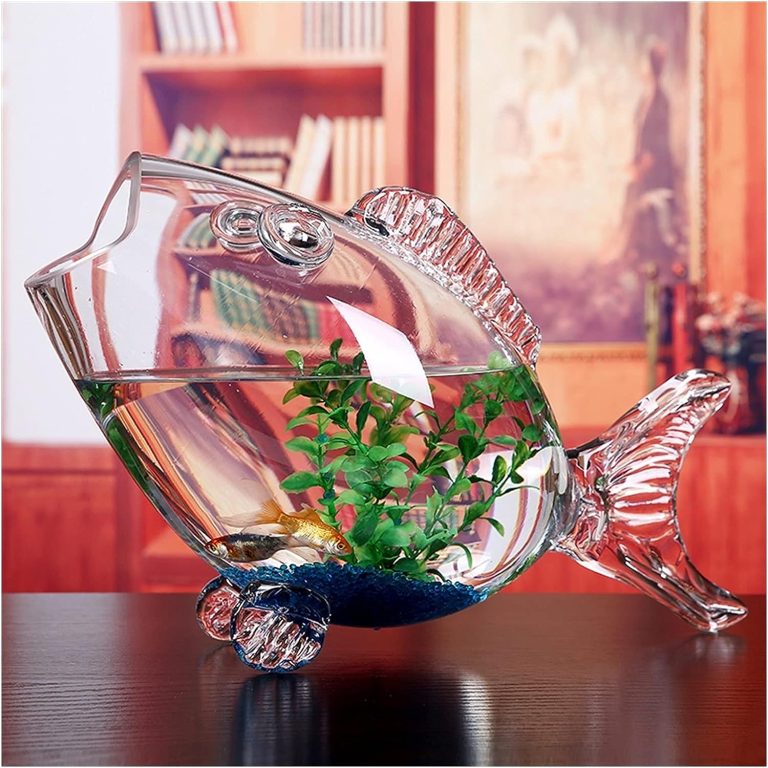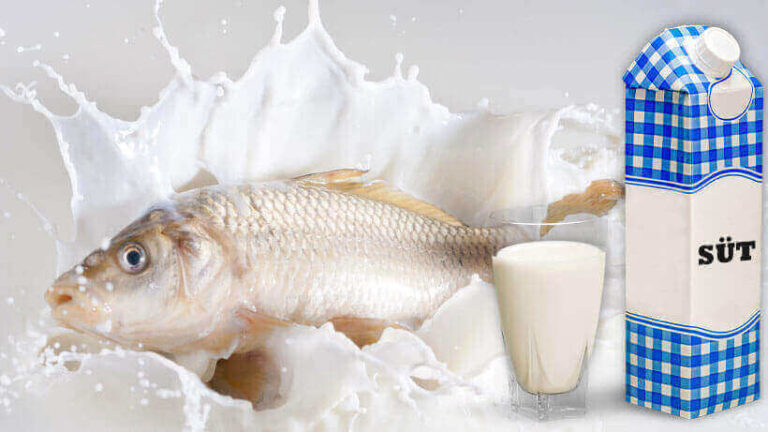Glowlight Tetra
The Glowlight Tetra (Hemigrammus erythrozonus) is a popular freshwater fish native to the Essequibo River in Guyana, South America. It is well-loved for its vibrant colors, peaceful temperament, and ease of care, making it a favorite among both beginner and advanced aquarium hobbyists.
Glowlight Tetra Fish Species Summary:
| Scientific Name: | Hemigrammus erythrozonus |
| Origin: | Essequibo River, Guyana, South America |
| Diet: | Omnivore (feeds on insects, crustaceans, and plant matter, supplemented with flake food, brine shrimp, daphnia, and bloodworms) |
| Behavior: | Peaceful |
| Behavior Towards Their Own Species: | Prefer to be in groups (schooling fish), less stressed when surrounded by their own kind. |
| Swimming Zone: | Middle |
| Water Temperature: | 24 – 28 °C |
| Water Hardness: | 5 – 12 GH |
| pH Level: | 6.0 – 7.5 |
| Minimum Aquarium Volume: | 40-75 Liters (10-20 gallons) for a small group |
| Adult Size: | 3 – 4 cm |
| Reproduction: | Lay eggs, require a separate breeding tank with soft, slightly acidic water, and plenty of plants for egg-laying. |
| Lifespan: | 3 – 5 years (with proper care) |
| Care: | Moderate, requires a well-balanced diet, regular water changes, and a tank with plenty of hiding spaces and plants. |
Tank Size
To keep Glowlight Tetras healthy and happy, a minimum tank size of 10-20 gallons is highly recommended. These fish are naturally schooling fish, which means they prefer to be in groups and feel safer and less stressed when surrounded by their own kind. A group of at least 6-10 individuals is ideal for them to exhibit their natural schooling behavior and for their well-being. A larger tank, preferably more than 20 gallons, will provide them with ample space to swim freely, display their natural behavior, and reduce stress. It will also allow you to create a more natural and enriched environment with plants and decorations, which will help in mimicking their natural habitat, thus making them feel more at home. Remember, a spacious tank not only contributes to their physical health by allowing adequate exercise but also to their mental well-being by reducing stress and aggression.
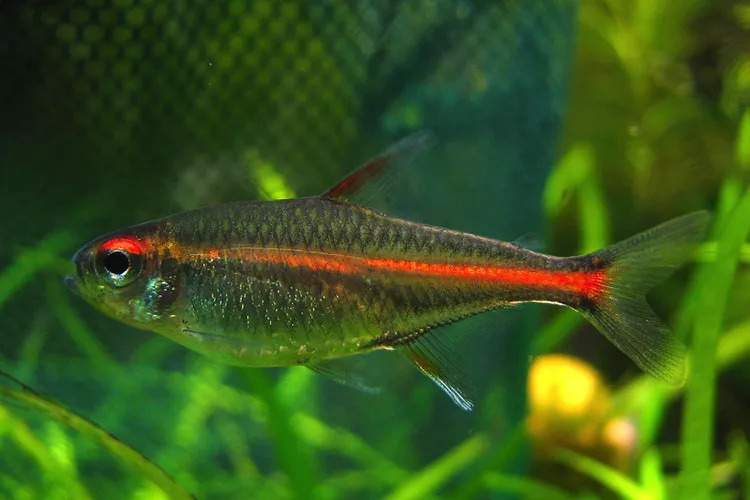
Water Parameters
Maintaining the correct water parameters is crucial for the health and well-being of Glowlight Tetras. Their natural habitat consists of slow-moving or still waters with a lot of vegetation, so it’s important to mimic these conditions as closely as possible in the aquarium.
- Temperature: Glowlight Tetras are tropical fish, and they thrive in warmer water temperatures. The ideal temperature range for them is between 24-28°C (75-82°F). It is essential to maintain a stable temperature within this range as sudden fluctuations can cause stress and lead to health problems. A heater and a thermometer are recommended to maintain and monitor the temperature accurately.
- pH Level: The pH level of the water should be slightly acidic to neutral, with a pH range of 6.0-7.5. This range is similar to the water conditions found in their natural habitat. It is advisable to test the water regularly to ensure the pH level remains stable.
- Water Hardness: The water hardness should be between 5-12 degrees of General Hardness (dGH). This is the range of hardness that Glowlight Tetras are accustomed to in their natural environment.
It is essential to regularly test the water parameters and make necessary adjustments to ensure the health and well-being of the Glowlight Tetras. Remember, consistency is key, and sudden changes in water parameters can lead to stress and other health issues for the fish. It is also recommended to perform regular water changes (about 20-25% weekly) to help maintain the water quality.
Filtration
Having a good quality filter is crucial for maintaining clean and clear water in the tank. The filter helps in removing physical debris, excess food, and waste from the water. It also helps in breaking down harmful chemicals and toxins, and in maintaining the necessary bacteria needed for nitrogen cycle. Since Glowlight Tetras are native to slow-moving or still waters, a filter that provides a gentle flow is preferred. A too strong current can cause stress to the fish as it is not something they are accustomed to in their natural habitat. An adjustable filter can be a good option, as it allows you to control the flow rate and make it suitable for your fish. Also, it’s important to regularly clean and maintain the filter to ensure its efficiency. Remember, a well-functioning filter is key to maintaining the overall health and well-being of your Glowlight Tetras and other tank inhabitants.
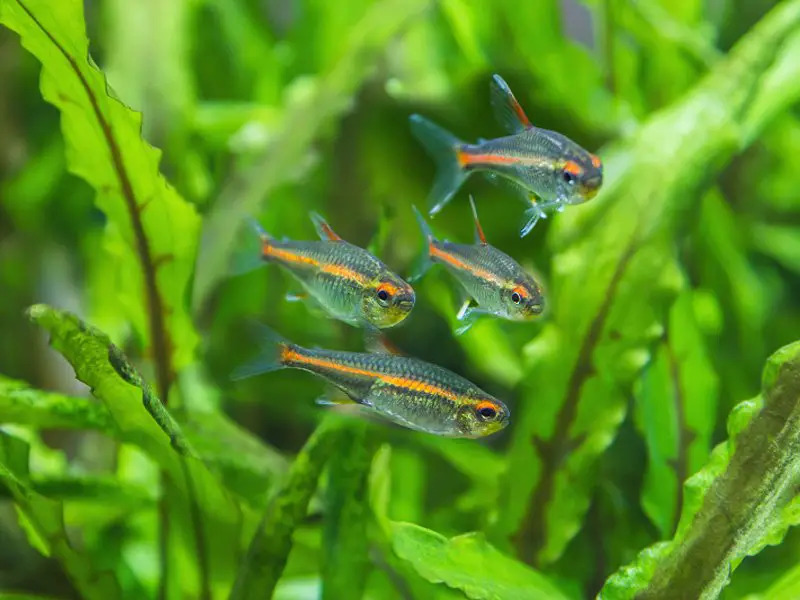
Lighting
Moderate lighting is the ideal choice for Glowlight Tetras as it not only helps in bringing out the vibrant colors of the fish but also closely mimics their natural environment. In their natural habitat, these fish are usually found in areas with dense vegetation, where sunlight is dappled and filtered through the leaves. Hence, a too bright or too dim lighting can cause stress to the fish as it is not something they are accustomed to.
Using full spectrum aquarium lights can be beneficial as it will help in simulating a day and night cycle which is important for the well-being of the fish. It also encourages natural behaviors and can aid in the growth of live plants in the tank, if you have any. Make sure to provide a period of darkness during each 24-hour cycle, as continuous light can cause stress to the fish and can also lead to excessive algae growth. Usually, a 10-12 hours of light and 12-14 hours of darkness cycle is recommended.
Diet
Glowlight Tetras are omnivorous, meaning they have a varied diet that includes both plant and animal matter. In the wild, their diet consists of small insects, crustaceans, and plant matter. To replicate this varied diet in captivity, it is important to provide a well-balanced diet that includes a variety of foods.
High-quality flake food should be the main staple of their diet as it is specially formulated to provide all the essential nutrients needed by the fish. However, a diet consisting solely of flake food is not recommended as it does not provide all the necessary nutrients that the fish would get in the wild. Therefore, it is important to supplement their diet with frozen or live foods such as brine shrimp, daphnia, and bloodworms. These foods are not only high in protein but also help in keeping the fish healthy and vibrant.
Vegetable matter is also important for the overall health of the fish. Including small amounts of blanched vegetables like spinach and zucchini in their diet can be beneficial.
Feeding them 2-3 times a day with small portions that they can consume within 3-5 minutes is usually sufficient. Overfeeding should be avoided as it can lead to obesity and other health issues. Additionally, excess food that is not consumed will decay in the tank and can lead to poor water quality.
It is important to note that Glowlight Tetras have small mouths, so it is important to provide food that is of an appropriate size for them to eat comfortably.
Tank Mates
- Peaceful Community Fish: Glowlight Tetras are known for their peaceful and non-aggressive nature, which makes them excellent community tank inhabitants. They do well in a community tank with other non-aggressive fish of similar size. Suitable tank mates include other small tetras (e.g., Neon Tetras, Cardinal Tetras), rasboras, guppies, mollies, small catfish (e.g., Corydoras), and small non-aggressive barbs (e.g., Cherry Barbs).
- Avoid Aggressive Fish: It is important to avoid keeping Glowlight Tetras with large or aggressive fish. Large or aggressive fish such as cichlids, Oscars, large catfish, and large barbs may intimidate or prey on the tetras. Additionally, fin-nipping species like Tiger Barbs should also be avoided as they can cause stress and injury to the Glowlight Tetras.
- Shoaling Fish: Glowlight Tetras are shoaling fish, which means they prefer to be in groups and feel safer and less stressed when surrounded by their own kind. Therefore, it is recommended to keep them in groups of at least 6-10 individuals. Keeping them in larger groups will help in exhibiting their natural schooling behavior and reduce stress.
- Other Considerations: It is also important to consider the water parameters and habitat requirements of the other fish you are planning to keep with Glowlight Tetras. Make sure the other fish have similar water parameter requirements and are compatible in terms of temperament and behavior. Also, consider the activity level of the other fish; overly active fish may stress the more calm and peaceful Glowlight Tetras.
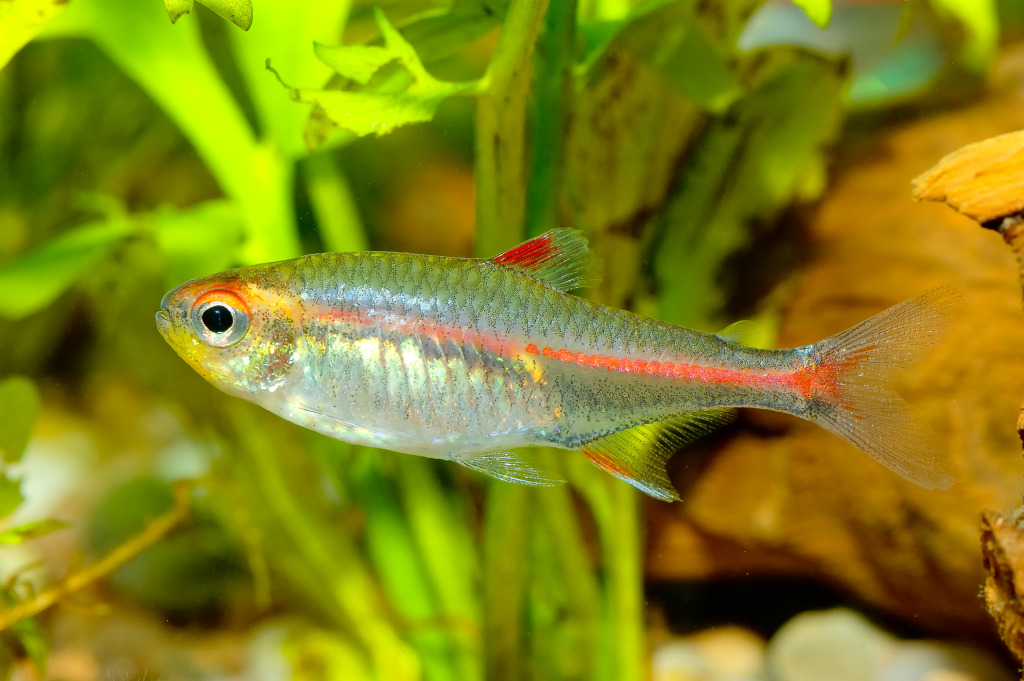
Breeding
- Tank Setup: Setting up a separate breeding tank is essential to provide a controlled environment for the breeding process. The water in the tank should be soft and slightly acidic with a pH range of 6.0-6.5. This will help in mimicking the natural breeding habitat of the Glowlight Tetras. The tank should be dimly lit as bright light can cause stress to the fish and may hinder the breeding process. It is also important to have plenty of plants in the tank as the female will lay her eggs among the plants. This not only provides a natural setting for egg laying but also offers some protection to the eggs from potential predators.
- Spawning: Before the spawning process, it is important to condition the breeding pair with high-quality live or frozen foods. This will help in ensuring that the fish are healthy and in good condition for breeding. When the female is ready to lay eggs, she will do so among the plants, and the male will then fertilize them. It is common for the female to lay up to 100 eggs during the spawning process.
- Parental Care: After the spawning process is complete, it is advisable to remove the parents from the breeding tank as they may eat the eggs. This is a common behavior among many species of fish and is a natural survival instinct. The eggs will hatch in about 24-36 hours after being laid, and the fry will be free-swimming in about 3-4 days.
- Feeding Fry: Initially, the fry will absorb nutrients from their yolk sacs, but once these are depleted, they will need to be fed. Infusoria or liquid fry food are good initial food sources as they are small enough for the fry to eat. After a few days, the fry can be fed newly hatched brine shrimp and microworms. These foods are not only small enough for the fry to eat but also provide the necessary nutrients needed for healthy growth and development.
Remember, breeding Glowlight Tetras requires careful planning and attention to detail. Maintaining the correct water parameters, providing a suitable environment, and ensuring proper nutrition are all essential factors for successful breeding.
More Tips
- Decorate the tank with driftwood, rocks, and live plants to create a natural environment for the Glowlight Tetras.
- Regular water changes (20-25% weekly) are essential to keep the water clean and the fish healthy.
- Do not overfeed the fish as it can lead to water pollution and health issues for the fish. Feed small amounts of food 2-3 times a day.
Keeping Glowlight Tetras can be a rewarding experience as they add a splash of color and liveliness to your aquarium. With proper care and attention, these beautiful fish can thrive in a home aquarium.

